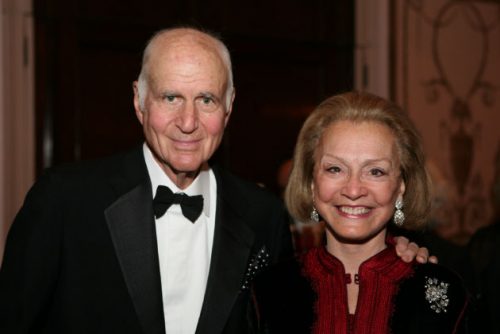The wonky nonprofit dispute over DAFs has spilled onto the Grey Lady’s august pages, and it suggests that the momentum is only building on the issue.
How Tech Billionaires Hack Their Taxes With a Philanthropic Loophole – that’s the title of David Gelles’ article published earlier this month at the New York Times. Gelles’ arguments will be familiar to those who have followed the reports on Donor-Advised Funds (DAFs) from Philanthropy Daily (here, here, here) (and beyond) in the past few years: DAFs allow wealthy donors to shield large sums from taxation without ultimately providing meaningful requirements to move their money out the door.
GoPro founder Nicholas Woodman gets singled out for scrutiny after parking $500 million in a personal foundation which, as of 2014, has apparently not made any significant grants.
Gelles runs through the other objections often made by DAF critics: due to weak or nonexistent reporting requirements, it’s difficult to follow a particular donor’s money, especially when it comes to political giving; money can be shuffled between DAFs and show up on paper as payouts; and overall DAF giving figures may be skewed by a small number of active donors, allowing for a freeloader problem. These concerns and others were among those raised in a critical Institute for Policy Studies report released last month.
The IPS report recommends a few policy countermeasures, such as delaying tax deductions until money actually reaches an active charity or barring DAF donations to private foundations. A more neutral approach comes from Ruth McCambridge at Nonprofit Quarterly, who expresses some doubt over both those recommendations (payout requirements could in fact depress overall giving, for instance, since DAFs already tend on average to payout at higher rates than foundations with set benchmarks).
On Twitter, the Center for Effective Philanthropy’s Phil Buchanan suggests that the whole DAF debate desperately needs better data—especially regarding whether or not DAF payouts result in a given nonprofit receiving more or less in the long run (on the one hand, DAFs may payout slowly, but on the other hand, high-profile DAF gifts can spur or replace a nonprofit’s existing fundraising strategy). Brian Mittendorf, a professor at Ohio State University, agrees, noting that we need to stop double-counting gifts and start getting more specific than average payout rates before proceeding with any muscular regulation.
True, the call for new rules isn’t likely to be loudly heard on the Hill anytime soon; legislators have been slow to pick sides, either out of a lack of clarity on the issue or a lack of interest. But the fact that this wonky nonprofit dispute has spilled onto the Grey Lady’s august pages suggests that the momentum is only building on the issue.
I’ll give the last word to McCambridge, who notes that we’re at something of a crossroads. Happily, however, it is usually these sort of moments, that follow the initial rounds of partisan line-drawing, where meaningful debate can really emerge:
“Many DAF sponsors have already begun implementing internal rules that answer some of the [transparency] concerns—for instance, some have rules in place to prevent funds from remaining dormant for too long. […] But codifying such practices and fine-tuning them to close any loopholes that have opened up during this period of explosive growth will either be done by the field in a way that lends itself to strict fieldwide standards or may eventually end up in the hands of Congress when we least expect it (and possibly following a scandal or two).”
##
NB: Here are some useful resources for those interested in this debate (some of these sources are cited in the articles I have already linked to)
- Ellen Steele & C. Eugene Steuerle, “Discerning the True Policy Debate Over Donor-Advised Funds.” Urban Institute report (Oct 2015). Accessible HERE.
- Most recent IRS requirements for donor-advised funds. Accessible HERE.
- The Economist, “A Philanthropic Boom: ‘Donor-Advised Funds.’” Mar 23, 2017. Accessible HERE.
- Richard Eisenberg, Forbes, “There’s a Target on Charity’s Booming Donor-Advised Funds.” Aug 2, 2018. Accessible HERE.







The facts are clear. DAF’s are used frequently to get a quick tax deduction and then never giving the money away. I represent the nonprofits who absent the DAF who would have an opportunity for those charitable dollars. This article goes too far into the weeds and challenges parenthood. Push that aside. DAF’s are presented as philanthropy — helping society—counted again when it moves from one investment strategy to another—counted again when if and when it is ever distributed. A former Chair of a Community Foundation told me his Dad would love DAF, ‘He could get the tax benefit and never give the money away!” Thanks for this exposure.
Additional data on donor advised funds, published by the Indiana University Lilly Family School of Philanthropy, is located at: https://philanthropy.iupui.edu/news-events/news-item/where-do-donor-advised-fund-grants-go?-.html&id=256
In addition, at the Leadership Roundtable hosted by The Fund Raising School, executives from Schwab, Vanguard, and Fidelity described how they are putting time limits on DAFs. If donations are not made within a certain time period – say, three years – the companies remind the donor and offers to direct donations if needed. Yes, anecdotes and not data, but interesting testimonials nonetheless.